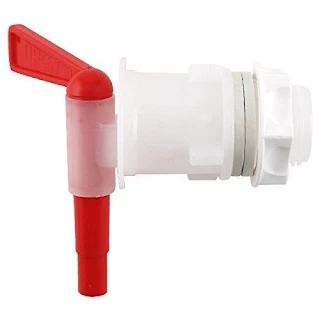How to manage pH levels with malic acid
Did you ever see that episode of Knight Rider when K.I.T.T. was placed in an acid bath and he left it as shell of a car?
Yeah?
Well, don't use that acid when making wine, perhaps use malic acid instead.
Malic acid is an acid that is found in fruit and quite commonly in grapes and apples. Have you ever had a Granny Smith apple and found it to be quite sour?
That's the malic acid at work. It's quite similar to citric acid in that sense.
As such it's used in all kinds of foods to give that tart flavor. Ever tasted 'Salt and Vinegar' chips?
That's not just vinegar you're tasting...
So why would one use malic acid when brewing wine?
It's a very handy compound for reducing the pH level of wine.
All good brewers know that both beer, cider, and wine need to be within certain pH level otherwise, the tasting experience will be horrible. The acidity works to counter the sweetness and bitter components of the wine such as tannins.
A wine that features too much acidity will taste extremely sour and sharp and produce a physical response from the mouth and tongue. A wine with not enough acid present will taste somewhat flabby and flat and its intended flavor will hard to discern.
This is why so many wine makers use pH testers (such as the Apera) to ensure their wine is in the correct range.
A word to the wise. If your wine is going to undergo malolactic fermentation (such as red or sparkling) do not add extra malic acid as this will convert to lactic acid.
Malic or tartaric acids may be added either before or after primary fermentation.
They can also be added during any blending or aging periods, but the increased acidity will become more noticeable to the drinker.
A word to the wise. If your wine is going to undergo malolactic fermentation (such as red or sparkling) do not add extra malic acid as this will convert to lactic acid.
Which wines suit the addition of malic acid?
- Most reds
- Rieslings
- Gewurztraminer
- Muscat
When do I add acid to the wine?
Malic or tartaric acids may be added either before or after primary fermentation.
They can also be added during any blending or aging periods, but the increased acidity will become more noticeable to the drinker.
How much malic to add to the must?
It's a general rule of thumb that 3.4 grams per gallon will adjust the acidity by +.1%.
It will lower pH less than tartaric acid will which is why some wine makers prefer to use that acid.
Order your acid from Amazon.
Malolactic fermentation or conversion is the chemical process in winemaking where the malic acid that is naturally present in grapes, is converted to lactic acid.
What is malolactic fermentation?
Malolactic fermentation or conversion is the chemical process in winemaking where the malic acid that is naturally present in grapes, is converted to lactic acid.
Fermentation is caused by a family of bacteria known as lactic acid bacteria.
Malolactic fermentation usually occurs as a secondary fermentation shortly after the end of the primary fermentation. The process is usually undertaken for the vast majority of red wines produced. Some white varieties such as Chardonnay use it as a byproduct of the reaction is a diacetyl which imparts the 'buttery' flavor associated with Chardonnay.
This process helps give the wine a good 'mouth feel' which is something all good beer brewers appreciate.
If you're wondering how beer makers can reduce bitterness and pH levels, they can use gypsum salt and calcium chloride.
If you're making prison hooch with juice you can do the same with malic acid.
If you're making prison hooch with juice you can do the same with malic acid.




